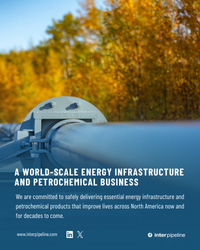By Al Troner, President Asia Pacific Energy Consulting (APEC)
U.S. production of field (lease) condensates is growing like crazy, especially in the Eagle Ford. There is way too much of this material for it to be absorbed into traditional crude blending markets. At the same time the production of plant condensate, a.k.a. natural gasoline, is also increasing along with the yield of all other products from natural gas processing plants. A glut of condensates has developed and is getting worse. Clearly this is an opportunity for new market development, and the bizdev community is hard at work coming up with concepts, projects and proposals to use all of this material in the U.S. and in export markets. But there is a problem. Condensate markets in different geographies seem to have little in common with each other. It’s like walking through the looking glass. One term can have several meanings. One meaning can be ascribed to several terms. Today we launch a RBN blog series to make sense of it all.
First, let’s consider a fundamental question. Are condensates in the natural gas liquids (NGL) family? Like everything about this topic, it depends. In U.S. usage, a “plant condensate” is the equivalent of products classified as “pentanes+” and natural gasoline, and these are considered NGLs. On the other hand, U.S. usage typically does not consider “field or lease condensate” as an NGL, instead classifying these commodities as crude oil. There are a variety of reasons for this distinction in the U.S. market, some rational some not so rational that we will explore a little later in this blog.
However, no such distinction exists in international markets, which consider both plant and field condensates the same thing, with both classified as natural gas liquids – since they are both liquids that come from natural gas. Of course, to further confuse things, international markets have their own labeling problems, calling some of these products “naphthas”, when any refiner will tell you that term ought to be reserved for products that have been through a crude distillation tower. Are you starting to get a sense for the problem? Because all of these terms are so mixed, mingled and intertwined, the only thing we can do is “Begin at the beginning” as Alice was told in Wonderland -- and that is with the general category of products called natural gas liquids – NGLs.
NGLs, LPGs and Purity Products
NGLs seem to exist in the twilight zone between black oil, or crude, the basis of all petroleum products, and natural gas (methane) the low carbon footprint, suddenly abundant (in the U.S.) fuel source. NGLs are neither here nor there – they possess, to differing extents, characteristics of both oil and gas and have values and market drivers both similar to and distinctly separate from oil and gas.
Yet it would appear that the key factor that unites all NGLs is that they are derived from gas and that most NGLs need special containment to remain liquids. Then, “What is in a name?”
|
"When I use a word," Humpty Dumpty said in rather a scornful tone, "it means just what I choose it to mean -- neither more nor less." "The question is," said Alice, "whether you can make words mean so many different things." (Lewis Carroll, Through the Looking Glass, Chapter 6) |
In fact, NGLs carry ambiguity in their very name. Ethane, propane, normal butane, isobutane and (as the product is commonly called in the U.S.), natural gasoline are all found in natural gas, but are liquid hydrocarbon molecules suspended within gas. This is equally true for lease condensates, hence the classification of lease condensates as NGLs in international markets. In this survey of the products alternatively called by names such as NGLs, condensates, pentanes plus and various other monikers, we will explore the wide range of terms used to label these products and how, at times, these different labels define each NGL somewhat differently.
The products we call crude oil and natural gas are base materials – oil is the precursor of petroleum products; gas is primarily valued on its ability to create heat, i.e. calorific value. NGLs are many things simultaneously and can be defined as end-products; petrochemical feedstocks or semi-finished intermediates used to create finished oil products. This very variability - this wide range of flexibility of NGL utilization - leads to much uncertainty. To avoid confusion, it is important to define the terms used and to understand how US market terminology and definitions differ from those abroad.
- NGLs are liquid hydrocarbons suspended as particles in gas, under conditions of subterranean pressure and temperature. As noted above, in the U.S. the term NGL is usually reserved for these products produced through some form of processing (natural gas processing plants or refineries), while in international markets it also includes field or lease condensates.
- Y-Grade, also called mixed NGLs or ‘raw make’ is an unfractionated blend of the various purity products (see definition below) that make up the NGL product family. A Y-grade stream is typically produced by a natural gas processing plant and transported by pipeline to a central fractionation facility to be split into purity products.
- NGL Purity Products – As this term is used in the U.S., the five purity NGL products are ethane (C2), propane (C3), normal butane (NC4), isobutane (IC4) and natural gasoline (C5+). The numbers indicate how many carbon atoms are contained in each NGL molecule. While butane and isobutane both have four carbon atoms, they differ somewhat in molecular structure. As a general rule, when at least 90% of the NGL stream has only one type of carbon molecule, this NGL, whether ethane or butane, is defined as a purity product.
- Liquefied Petroleum Gas, or LPG, is a subset of the NGL family. In the U.S. the term includes propane, normal butane and isobutane and is often associated with refinery production and demand for these products. The term is also used to refer to the international trade for propane and butanes.
- Pentane+ or C5+ designations include the products that we also call condensates. We’ll talk about that plus sign and the many varieties of condensates in the section below.
- Heavier NGLs: In the US market, the term Heavy NGLs refers to natural gasoline and butane/isobutane, but this definition is not universal and certainly can be misleading. The only “heavy” NGL that can be separated, stored and transported without special containment is condensate (natural gasoline), a point which we will detail further below. The term Heavy NGLs is rarely used in foreign NGL markets, and when it is occasionally used, it refers solely to condensate.
- Ethane/Propane Mix: In the US market, ethane and propane are sometimes sold as a mixed stream for use as a petrochemical feedstock. The most common is called E/P Mix, consisting of 80% ethane/20% propane. In some cases the buyers want a custom blend that differs in the proportion of these two NGLs. E/P Mix is sold in European NGL markets and is the basis of Mideast Gulf ethylene cracker feedstock supply, but is virtually unknown in Asia.
Note that most NGLs originate from gas production, whether associated with crude or solely on its own non-associated gas production. When NGLs are contained within a gas stream, it is said that they are in “vapor phase”.
All natural gas contains some NGLs. Sometimes there are enough NGLs to be recovered economically, sometimes not. Sometimes NGLs must be removed (whether economic or not) for the ‘residue’ natural gas to meet BTU and other specifications for the take-away natural gas pipeline or LNG liquefaction facility. Regardless, for natural gas produced at the wellhead to be sold and transported in pipeline systems, various impurities like sulfur and water must be removed. When required by downstream specifications, or economically advantageous or both, the NGLs are separated from the gas in a natural gas processing plant. The mixed stream or Y-grade NGLs are then transported to a fractionator for separation into purity products. That fractionator may be at the processing plant location, but in the U.S. is usually some distance away. As discussed on many occasions in RBN blogs, by far the largest NGL fractionation center in the U.S. is at Mont Belvieu, Texas.
The table below from the Baker Institute shows NGL products, their characteristics and their markets.
Source: Baker Institute (Click to Enlarge)
Condensates, Pentanes Plus and Natural Gasoline
Now that we’ve cleared up NGLs, we need to turn to the far more convoluted world of condensates, and natural gasoline. But that’s not the only labels we need to include. There is also naphtha, Pentanes Plus and even A-180. Each of these terms may have a slightly different meaning in different markets.
An Example of the Name Game: Pentanes Plus. For example, Pentanes Plus, as defined in the United Arab Emirates (Abu Dhabi National Oil Company, or ADNOC) produces a condensate stripped directly from the gas stream. It is a light, highly paraffinic naphtha equivalent and therefore best suited for ethylene cracking. It excludes ethane and LPG and is sold as a naphtha grade. So, this material is called pentane, which is a condensate that is sold as paraffinic naphtha. Got it?
And there still is another Pentanes Plus, this one defined by the Energy Information Agency (EIA), a unit of the US Department of Energy (DOE). EIA describes Pentanes as “a mixture of hydrocarbons, mostly pentanes and heavier, extracted from natural gas. (It) includes iso-pentane, natural gasoline, and plant condensate.” Note that it excludes lease condensate, which EIA inconveniently lumps into their crude oil production statistics. Obviously ADNOC’s “Pentanes Plus” is not the same stuff as EIA’s Pentanes Plus.
Join Backstage Pass to Read Full Article










